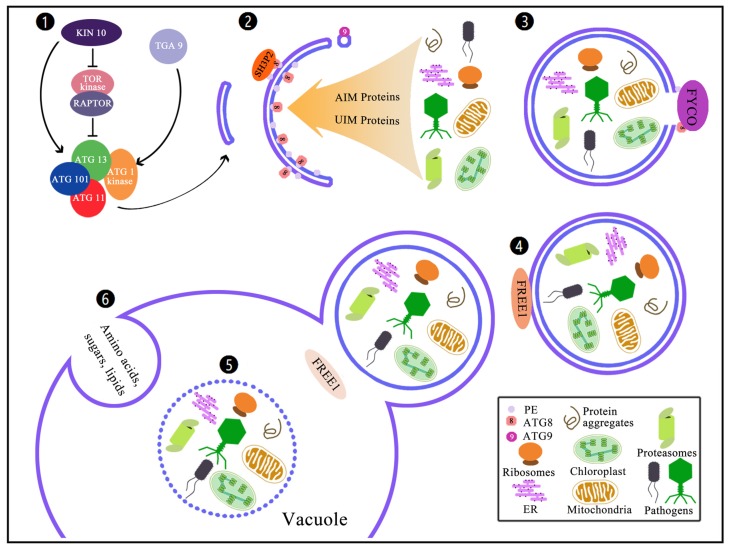Figure 1.
The molecular route of autophagy. (1) Induction of macroautophagy is regulated upon favorable and unfavorable conditions: The TOR and RAPTOR kinase complex represses the ATG13-ATG1-ATG101-ATG11 complex to regulate the macroautophagy induction negatively, whereas the KIN10 suppresses the TOR-RAPTOR activity in parallel with the positive role of TGA9 to modulate autophagy induction. (2) ATG9 regulates the delivery of lipids to the developing phagophore, while the SH3P2 interacts with ATG8 to decorate autophagosomes, and the AIM or UIM proteins facilitate the transportation of damaged organelles and invasive pathogens to the autophagosomes. (3) With the help of FYVE and coiled-coil domain-containing (FYCO) proteins, the autophagosome is tethered to the microtubule transport machinery. (4) Fusion of the autophagosomes with the tonoplast is mediated by FYVE-DOMAIN PROTEIN REQUIRED FOR ENDOSOMAL SORTING 1 (FREE1) and other proteins, and then releases autophagic bodies into the vacuole. (5) The autophagic bodies are subsequently degraded by vacuolar hydrolases. (6) The microautophagy is preceded by invagination of the tonoplast to engulf portions of the cytosolic constituents directly into autophagic bodies within the vacuole, like amino acids, sugars and lipids. Both pathways are dedicated to a cytoplasm-to-vacuole route and eventually lead to the storage and/or recycling of materials.

